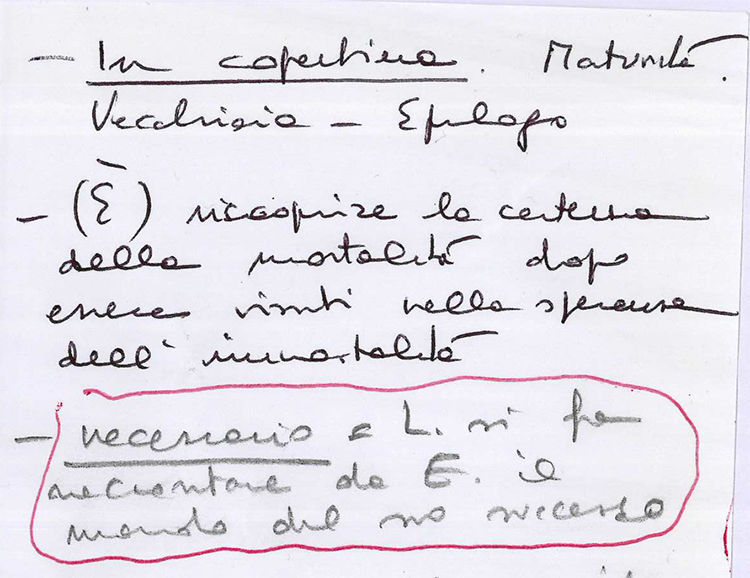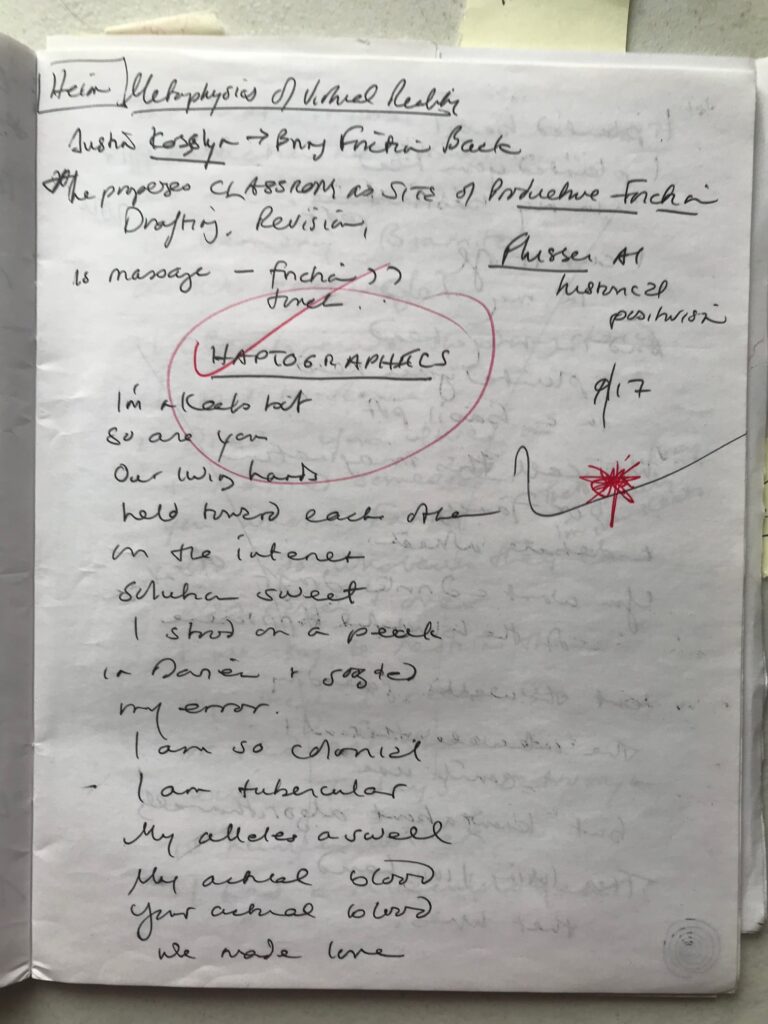Issue 212, Spring 2015
 Notes from Elena Ferrante’s final revisions to The Story of the Lost Child.
Notes from Elena Ferrante’s final revisions to The Story of the Lost Child.
Over the past ten years, the translation into English of Elena Ferrante’s novels—including Troubling Love, The Days of Abandonment, The Lost Daughter, and the first three volumes of the tetralogy known in English as the Neapolitan Novels—have won her a passionate following outside her native Italy; the fourth of the Neapolitan Novels will appear in English, as The Story of the Lost Child, this fall. It is now common to hear Ferrante called the most important Italian writer of her generation, yet since the original publication of her first novel, Troubling Love, in 1992, she has rigorously protected her privacy and has declined to make public appearances. (“Elena Ferrante” is a pen name.) She has also refused to give any interviews over the telephone or in person, until now.
Her interviewers—her publishers, Sandro and Sandra Ferri, and their daughter, Eva—describe how the interview was conducted:
“Our conversation with Ferrante began in Naples. Our original plan was to visit the neighborhood depicted in the Neapolitan Novels, then walk along the seafront, but at the last moment Ferrante changed her mind about the neighborhood. Places of the imagination are visited in books, she said. Seen in reality they may be hard to recognize; they are disappointing, they might even seem fake. We tried the seafront, but in the end, because it was a rainy evening, we retreated to the lobby of the Hotel Royal Continental, just opposite the Castel dell’Ovo.
“From here, out of the rain, we could every so often glimpse people passing along the street and imagine the characters who have for so long occupied our imaginations and our hearts. There was no particular need to meet in Naples, but Ferrante, who was in the city for family reasons, invited us and we took advantage of the occasion to celebrate the completion of The Story of the Lost Child. The conversation continued late into the night and resumed the next day over lunch (clams), then again in Rome, at our house (tea and tisane). At the end, each of us had a notebook full of notes. We compared them and reorganized the material according to Ferrante’s directions.”
—The Editors
INTERVIEWER
How do you begin a new work?
FERRANTE
I can’t say precisely. I don’t think anyone really knows how a story takes shape. When it’s done you try to explain how it happened, but every effort, at least in my case, is insufficient. There is a before, made up of fragments of memory, and an after, when the story begins. But before and after, I have to admit, are useful only in answering your question now in an intelligible way.
INTERVIEWER
What do you mean by “fragments of memory”?
FERRANTE
You know how when you have in your head a few notes of a tune but you don’t know what it is, and if you hum it, it ends up becoming a different song from the one that’s nagging at you? Or when you remember a street corner but you can’t remember where it is? That kind of thing. My mother liked to use the word frantumaglia—bits and pieces of uncertain origin which rattle around in your head, not always comfortably.
INTERVIEWER
And any of them could be the origin of a story?
FERRANTE
Yes and no. They might be separate and identifiable—childhood places, family members, schoolmates, insulting or tender voices, moments of great tension. And once you’ve found some sort of order, you start to narrate. But there’s almost always something that doesn’t work. It’s as if from those splinters of a possible narrative come equal yet opposing forces that need to emerge clearly and, at the same time, to sink farther into the depths. Take Troubling Love—for years I had in my mind many stories about the periphery of Naples, where I was born and grew up. I had in my mind cries, crude family acts of violence I had witnessed as a child, domestic objects. I nourished Delia, the protagonist, on those memories. The figure of the mother, Amalia, on the other hand, appeared and immediately withdrew—she almost wasn’t there. If I imagined Delia’s body so much as brushing against her mother’s, I felt ashamed and moved on to something else. Using that scattered material I wrote many stories over the years—short, long, very long, all in my eyes unsatisfying, and none having to do with the figure of the mother. Then, suddenly, many of the fragments vanished, while others stuck together, all against the dark background of the mother-daughter relationship. Thus, in a couple of months, Troubling Love emerged.
INTERVIEWER
And The Days of Abandonment?
FERRANTE
Its birth certificate is even more vague. For years I had in mind a woman who closes the door of her house one night, and in the morning when she goes to open it she realizes she’s no longer able to. Sometimes sick children came into it, sometimes a poisoned dog. Then, quite naturally, everything settled around an experience of mine that had seemed to me unspeakable—the humiliation of abandonment. But how I moved from the frantumaglia that I’d had in my mind for years to a sudden selection of fragments, welded into a story that seemed convincing—that escapes me, I can’t give an honest account. I’m afraid that it’s the same thing as with dreams. Even as you’re recounting them, you know that you’re betraying them.
INTERVIEWER
Do you write down your dreams?
FERRANTE
The rare times that I seem to remember them, yes. I’ve done it since I was a girl. It’s an exercise that I would recommend to everyone. To subject a dream experience to the logic of the waking state is an extreme test of writing. You can never reproduce a dream exactly. It’s a losing battle. But putting into words the truth of a gesture, a feeling, a flow of events, without domesticating it, is also an operation that’s not as simple as you might think.
INTERVIEWER
What do you mean by “domesticating the truth”?
FERRANTE
Taking overused expressive paths.
INTERVIEWER
In what sense?
FERRANTE
Betraying the story out of laziness, out of acquiescence, out of convenience, out of fear. It’s always easy to reduce a story to clichés for mass consumption.




